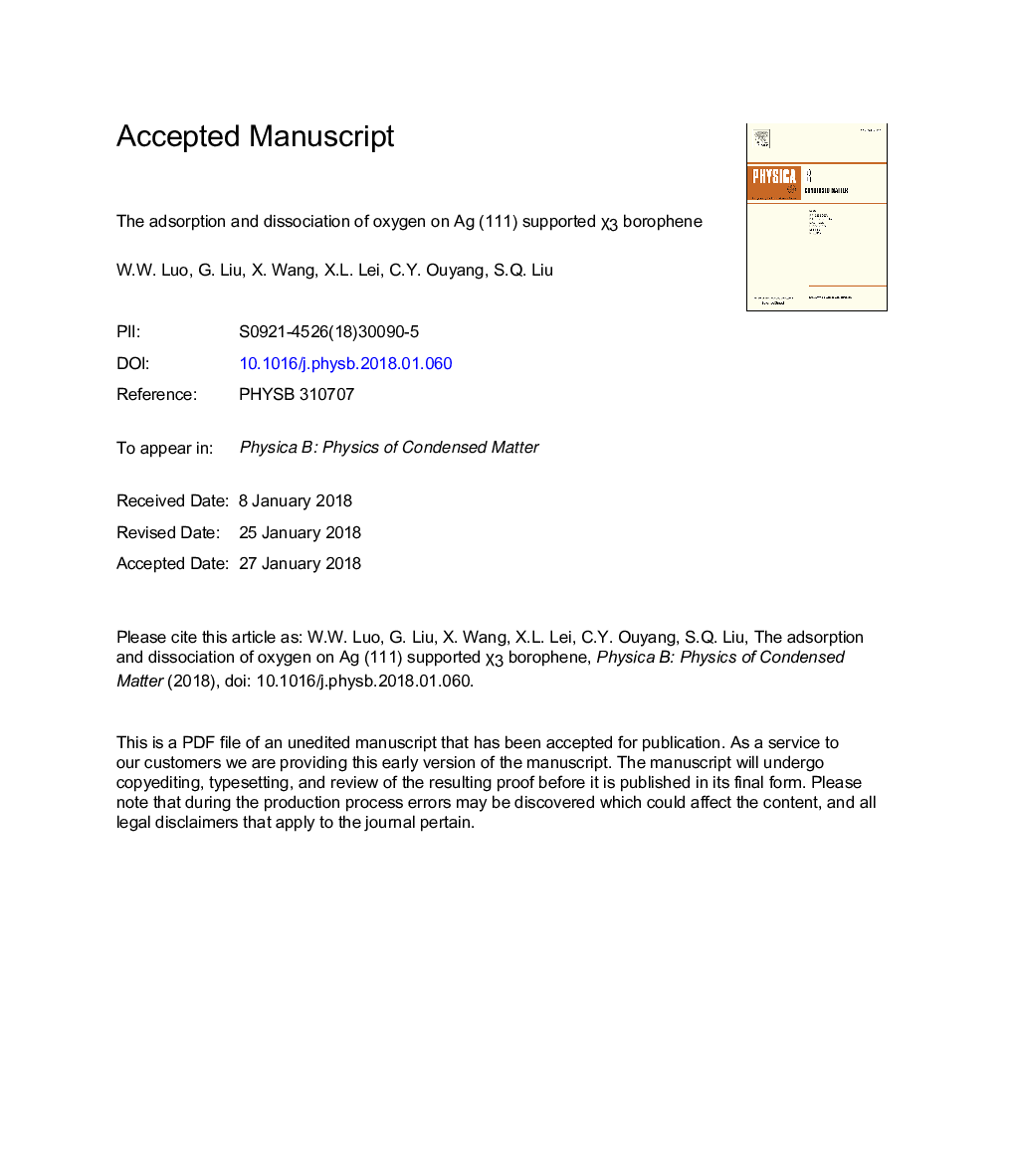| Article ID | Journal | Published Year | Pages | File Type |
|---|---|---|---|---|
| 8160736 | Physica B: Condensed Matter | 2018 | 24 Pages |
Abstract
The superstructure of Ï3 borophene on Ag (111) has recently been synthesized in experiment. In this work, we investigate its structural, electronic properties and the oxidation mechanism through first-principles calculations. We find the superstructure of Ï3 borophene on Ag (111) maintain the planar characteristics, like its free-standing form, owing to the weakly interaction between adsorbate and substrate. Moreover, oxygen molecule can be spontaneously adsorbed on its superstructure in a manner of chemical adsorption. Importantly, the energy barrier of â¼0.35â¯eV for oxygen dissociation indicates its relative stability in ambient conditions compared with the active silicene. Furthermore, the mobility of O2-dissociation-induced O atom is poor at room temperature, implying the difficult migration of O atom on borophene surface. On the other hand, due to the strong BO bonding, desorption of O2-dissociation-induced O atoms on superstructure of Ï3 borophene becomes impossible, ultimately leading to form the boron oxides.
Keywords
Related Topics
Physical Sciences and Engineering
Physics and Astronomy
Condensed Matter Physics
Authors
W.W. Luo, G. Liu, X. Wang, X.L. Lei, C.Y. Ouyang, S.Q. Liu,
